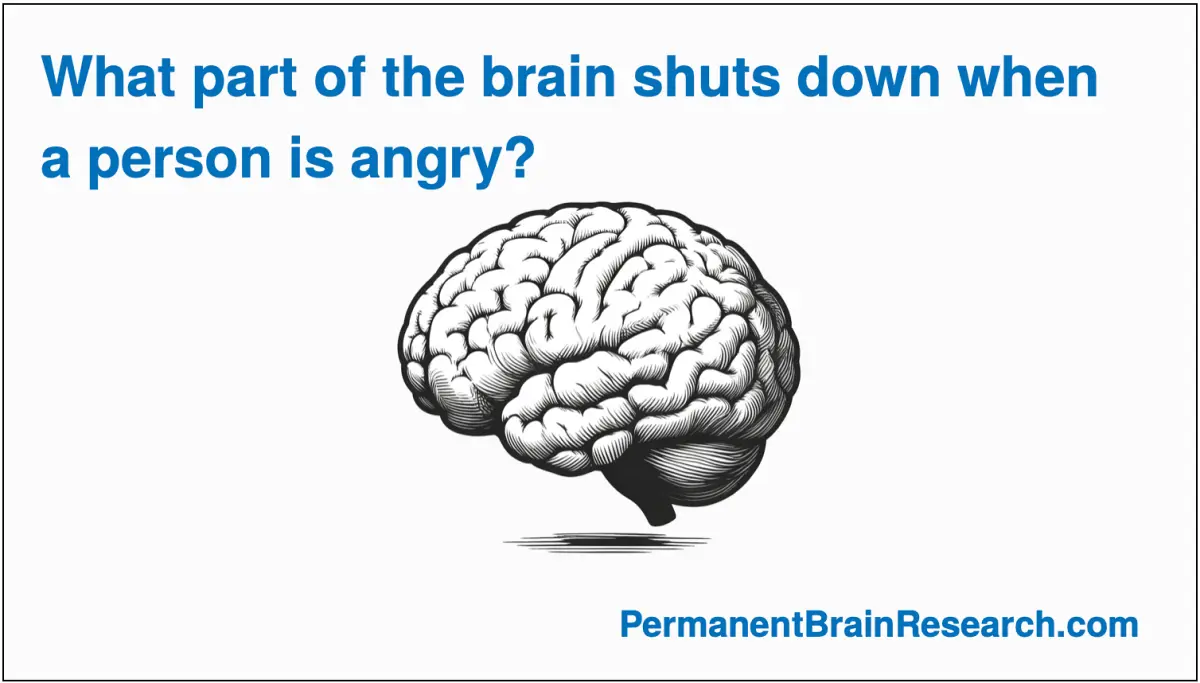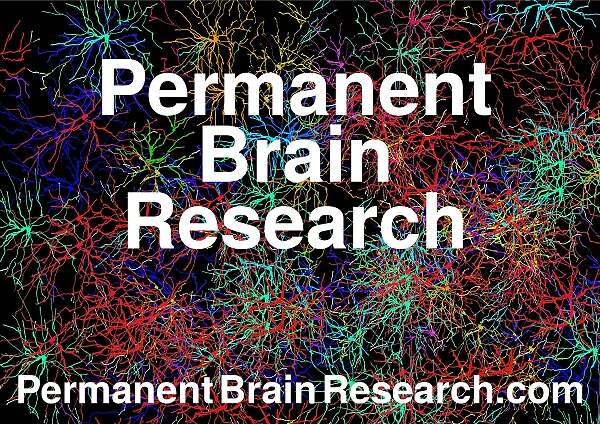
What part of the brain shuts down when angry?
During anger, the prefrontal cortex tends to become less active. Under normal conditions, the prefrontal cortex regulates emotions and behaviors, including inhibiting aggressive impulses. When its activity decreases, it’s harder to think clearly or make rational decisions, often leading to more emotionally driven and less reasoned responses.
Why is the activity of the prefrontal cortex decreased in anger?
The brain prioritizes immediate, survival-oriented actions during emotional responses. This reaction of anger is linked to the brain’s acute stress response, also known as the “fight or flight” mechanism. When a person becomes angry, the brain perceives it as a threat and reacts to protect the person. This reaction is mediated primarily by the amygdala, a brain region that processes emotional responses. When the amygdala is activated, it can inhibit the prefrontal cortex.
Can a person suppress this reaction just by thinking or willing?
It’s difficult to suppress the brain’s instinctual responses to anger. But you can learn how to response to the responses of the brain.
What solutions could brain research provide on this topic?
Can Mindfulness-Based Stress Reduction (MBSR) help to cope with anger?
Yes, mindfulness helps by fostering a greater awareness of one’s thoughts and feelings, allowing for more thoughtful responses rather than impulsive reactions. This is supported by research published in “Mindfulness” and other peer-reviewed journals. Mindfulness techniques, part of MBSR, can significantly reduce emotional reactivity and help individuals manage their anger more effectively.
Search the web for “The moderating effects of anger suppression and anger expression on cognitive behavioral group therapy and mindfulness-based stress reduction among individuals with social anxiety disorder” – https://www.sciencedirect.com/science/article/abs/pii/S0165032721001385
Cognitive-behavioral therapy and mindfulness-based stress reduction (MBSR) are two prominent evidence-based treatments for social anxiety disorder (SAD). It is not clear, however, whether outcomes of these two treatments are moderated by similar factors. For example, whereas anger suppression and anger expression each predict outcomes in cognitive- behavioral group therapy (CBGT), it is unknown whether they differentially influence outcomes in CBGT versus MBSR.
Can systemic techniques (from systemic therapy) help to cope with anger?
Yes, systemic interventions from systemic therapy provide unique approaches to managing anger by exploring the relationships and dynamics within an individual’s family or social system, even the relations between a person’s ego states.
These systemic interventions can help to better cope with anger
Family Therapy Sessions
These sessions involve multiple family members and focus on understanding the family dynamics that contribute to anger. By addressing these interactions, the therapist can help modify unhealthy patterns and improve communication skills, reducing triggers of anger within the family context.
Communication Training
Systemic therapy often includes training in effective communication techniques. These skills help individuals express their needs and emotions more clearly and listen to others without escalating to anger, promoting healthier interactions within their relationships.
Conflict Resolution Techniques
Therapists teach conflict resolution strategies that help individuals and families manage disputes constructively rather than destructively. Learning to resolve conflicts effectively can significantly reduce the frequency and intensity of angry outbursts.
Systemic Reframing Techniques
Systemic therapists work with clients to reframe problematic situations, helping them see issues from different perspectives. This can reduce the emotional charge and help manage reactions better when potential triggers for anger arise.
Genogram Analysis
This involves creating a detailed family tree that explores the relationships and behavioral patterns across generations. Understanding these patterns can illuminate underlying issues contributing to anger and guide interventions.
Boundary Setting
Teaching individuals and families to set healthy boundaries is another systemic intervention. Clear boundaries can prevent misunderstandings and reduce the situations that might lead to anger.
Systemic Desensitization
Like behavioral approaches, systemic desensitization involves gradual exposure to anger triggers within a controlled setting, where individuals can practice their responses using the new skills they have learned.
Enactment
In this technique, family members reenact troublesome interactions under the guidance of a therapist, who helps them identify and alter unhelpful dynamics in real time.
How can Milton H. Erickson’s hypnotherapy concepts help to cope with anger?
Metaphors and Stories
Erickson’s use of metaphorical language in therapy is a strategic approach to engage the client’s subconscious in a dialogue. These metaphors act as seeds for new ideas and behaviors, subtly suggesting alternative reactions to anger-triggering situations.
Reframing Perspectives
This technique is pivotal in helping clients see their anger and its triggers from new perspectives. It involves changing how clients view a situation and transforming their emotional response to it, which can drastically reduce the intensity of the anger experienced.
Accessing Internal Resources
Erickson believed in the inner capabilities of every individual. In therapy sessions, clients are guided to unlock these resources, using hypnosis to reinforce their inherent strengths and abilities. This empowerment is crucial for managing and overcoming habitual anger responses.
Indirect Suggestions
Therapy sessions often incorporate indirect suggestions that align with the client’s goals. These suggestions are crafted to bypass the conscious mind’s resistance and implant healthier response mechanisms directly into the subconscious.
Anchoring Calm States
Therapists teach clients how to anchor themselves in states of calm and resourcefulness. These anchors can be activated in times of potential anger, providing a quick and effective means to regain emotional equilibrium.
Therapeutic Paradoxes
Introducing paradoxical commands is a technique used to challenge the client’s existing mental models around anger. By instructing clients to engage in the behavior they want to change, they often find themselves naturally resisting it, leading to a decrease in angry reactions.
Symbolic Imagery
Guided imagery is utilized to help clients visualize successfully handling potential conflicts without anger. This mental rehearsal prepares the mind and body to act in accordance with these new strategies when real situations arise.
Explore: What is Permanent Brain Research?


